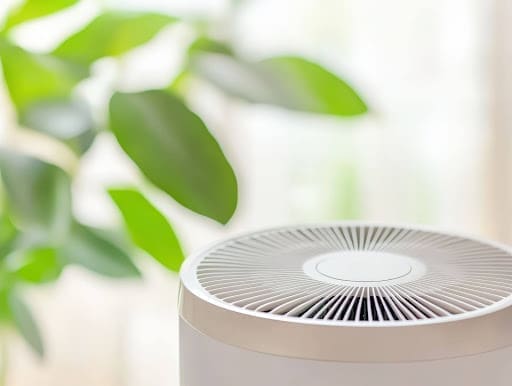Windows do far more than simply frame a beautiful view or invite sunlight into your home—they play a crucial role in shaping the quality of the air you breathe indoors. With most people spending approximately 90% of their time inside, according to the U.S. Environmental Protection Agency, optimizing indoor air quality is essential for health and well-being. At Advanced Window Products, understanding how window design influences ventilation, pollutant levels, and energy efficiency can empower homeowners to make choices that support a healthy living environment.
How Window Placement and Design Affect Ventilation
Proper ventilation is one of the most effective ways to maintain superior indoor air quality. Windows are a primary channel for natural ventilation, allowing stale air to exit and fresh air to enter. Strategic window placement, such as installing operable windows on opposite sides of a room or home, creates cross-ventilation. This encourages continuous airflow, which helps dilute and remove indoor pollutants like volatile organic compounds (VOCs), dust, and moisture.
The design of the window itself also matters. For instance, casement windows can open wider than other types, providing greater airflow per square foot of opening. Awning and sliding windows can be positioned to direct breezes indoors, especially when paired with thoughtful landscaping that encourages wind movement toward the home. By focusing on both placement and design, homeowners can maximize the natural ventilation benefits of their windows.
Discover how custom window design for Texas homes blends style and functionality, creating a perfect fit for local weather while enhancing curb appeal and comfort.
The Role of Windows in Reducing Indoor Pollutants
Indoor air is often more polluted than outdoor air, largely due to the accumulation of contaminants from cleaning products, furnishings, and even cooking. According to the World Health Organization, indoor air pollution is responsible for millions of premature deaths globally each year. Effective window design can help mitigate these risks by encouraging the regular exchange of indoor and outdoor air.
Operable windows that are easy to use encourage residents to ventilate their homes routinely. Additionally, windows equipped with secure, adjustable ventilation latches allow for safe airflow even when the home is unoccupied, helping to consistently reduce pollutant buildup. The incorporation of screens further ensures that while air moves freely, common outdoor allergens and debris are kept at bay, enhancing air quality without introducing new contaminants.
Balancing Airflow With Energy Efficiency
One concern homeowners often have is that increasing ventilation might compromise energy efficiency. However, with thoughtful window selection, it’s possible to enjoy both fresh air and a comfortable, energy-efficient home. Modern window technologies, such as low-emissivity (Low-E) glass and multi-pane construction, help insulate the home while still allowing for adequate ventilation when desired.
Selecting ENERGY STAR® certified windows is an excellent way to ensure your windows help maintain comfortable indoor temperatures and reduce energy usage. These windows are designed to minimize heat transfer, which means you can ventilate as needed without significant energy loss. For more information on energy-efficient window options, visit our Energy Efficient Windows page.
Learn how maximizing home light and energy efficiency can make living spaces brighter, lower energy costs, and improve overall comfort year-round.
Window Features That Enhance Indoor Air Quality
When considering new windows, look for features that actively contribute to better indoor air. Operable styles like double-hung, casement, and awning windows are preferable for their ease of use and versatility in controlling airflow. Some advanced window products also include built-in air filtration systems, further supporting clean and healthy indoor air.
Window orientation is another key factor. South and west-facing windows can help take advantage of prevailing breezes, while properly placed windows in kitchens and bathrooms can quickly remove excess moisture and odors, reducing the risk of mold and mildew growth. Regular cleaning and maintenance, both of the glass and frames, ensure that windows continue to function as intended and do not become sources of dust and allergens themselves.
Health Benefits of Improved Indoor Air Quality
Maintaining healthy indoor air offers numerous benefits, from reducing allergy and asthma symptoms to improving sleep and overall well-being. The Centers for Disease Control and Prevention (CDC) emphasizes that good ventilation can lower the concentration of airborne contaminants, helping to prevent respiratory illnesses and other health issues. For families with young children, seniors, or individuals with pre-existing conditions, these benefits are even more pronounced.
Choosing windows that support effective ventilation and air exchange is an investment in your family’s health. Homes that consistently maintain high-quality indoor air are more comfortable, inviting, and supportive of long-term wellness.
Tips for Selecting the Right Windows for Air Quality
When choosing windows to enhance indoor air quality, consider the following:
- Prioritize operable windows that provide flexible ventilation options.
- Opt for high-quality seals and frames to prevent outdoor pollutants from entering when windows are closed.
- Look for ENERGY STAR® or similar certifications to ensure energy efficiency is not sacrificed.
- Consider window placement to maximize cross-ventilation and take advantage of natural breezes.
- Choose windows with easy-to-clean designs to minimize the accumulation of dust and allergens.
For personalized advice on window selection tailored to your home, our team at Advanced Window Products is ready to help.
Making the Most of Your Windows
Your windows are more than architectural features—they are essential to maintaining a safe, healthy, and comfortable indoor environment. By understanding the connection between window design and indoor air quality, you can make informed decisions that benefit your family in the long run.
To explore window options that enhance airflow and air quality without compromising on energy efficiency or style, browse our range of residential window solutions. For more tips and insights on creating a healthier home, visit our blog.
Improving indoor air quality starts with the right windows—let Advanced Window Products help you breathe easier at home.
